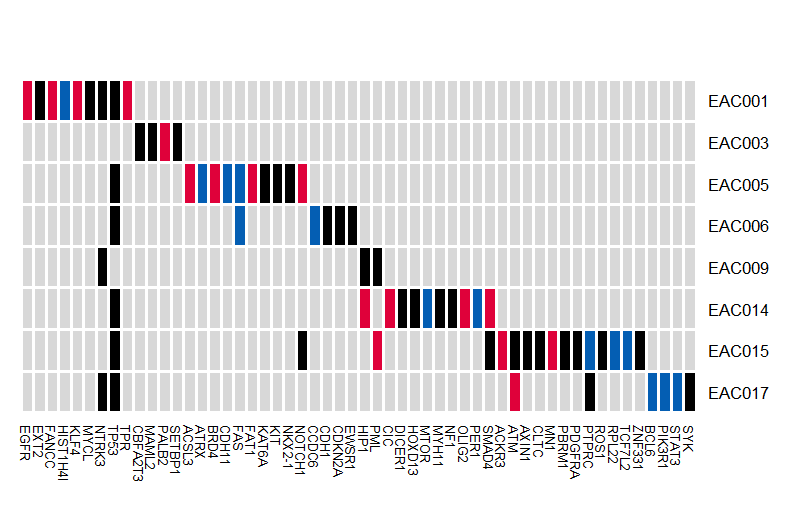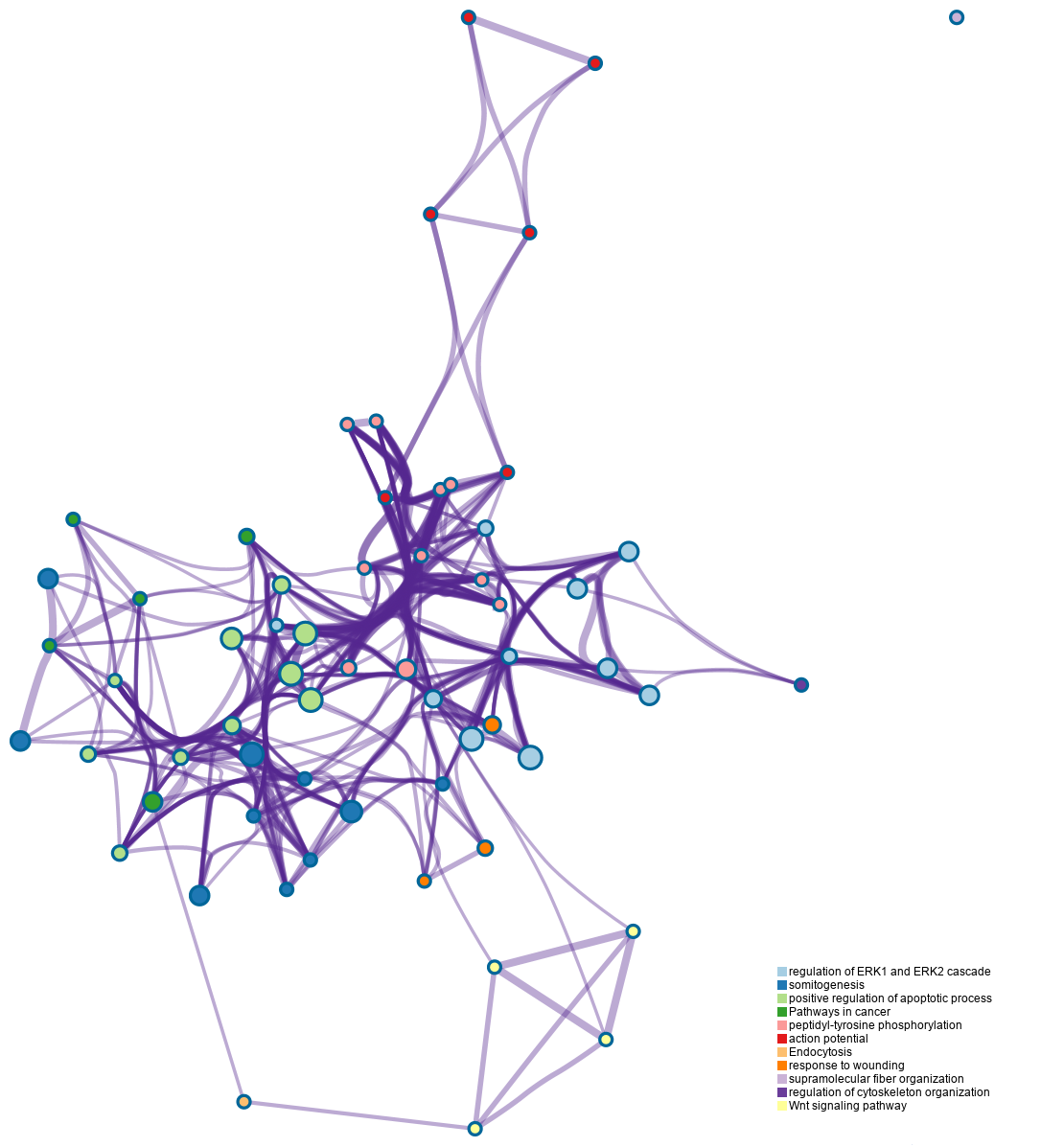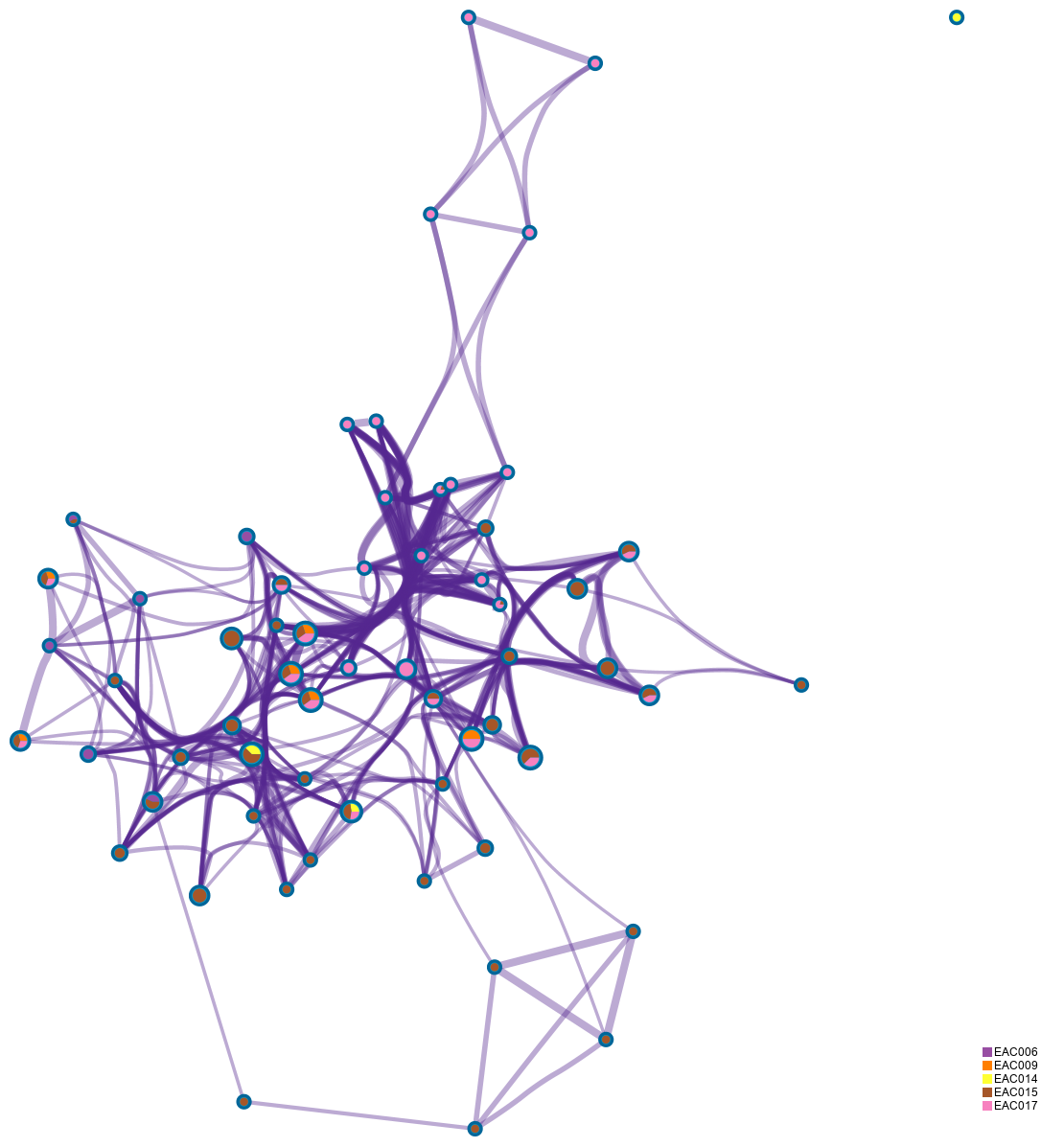| Patient ID: | p015_EAC017 |
| Age: | - |
| Gender: | M |
| Cancer Description: | Pathology:Adenocarcinoma |
| Sample Location: | Germline,pre-chemotherapy tumor regions,post-chemotherapy tumor regions |
| Tumor Stage: | Pre:3A,Post:2B |
| TNM Stage: | Pre:T3N1,Path TNM Stage:pT2N1 |
| Treatment: | epirubicin, cisplatin and capecitabine (3 cycles) post operation |
| Sample Sequencing: | Whole exome sequencing |
| PMID: | 26003801 |
| Data Sources: | Supplementary_Table_S3,Figure1 |
| Journal: | Cancer Discov |
| Published: | 2015 Aug |
| Sequencing Platform: | Illumina HiSeq 2500(approximately 90X) |
| Pipeline/Software: | align:bwa mem(bwa-0.7.7); variant:VarScan2 (v2.3.6); Picard; QC:picard tools (1.107), GATK (2.8.1) and FastQC (0.10.1); |
●The samples from a single patient are used to generate phylogenetic tree.●The schematic diagram is adapted from the original figure in the article.

●Trunk mutation: Alterations shared by all samples/regions, possibly occurred early in tumorigenesis. ●Branch mutation: Alterations shared by a subset of samples or regions, possibly occurred later in tumorigenesis. ●Private mutation: Alterations present in only one sample/region of the tumor, possibly occurred later in tumorigenesis. ●Branch lengths are proportional to the number of mutations separating the branching points. ●Potential driver genes/mutations are mapped along the tree if available.
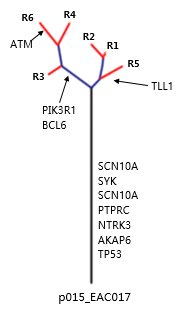

●Somatic mutation landscape of cancer related genes in the study.●Each row represents one patient; each column represents one cancer gene.●The heat map indicates the presence and classification of a mutation or its absence (gray) in each patient.

-log10(P)
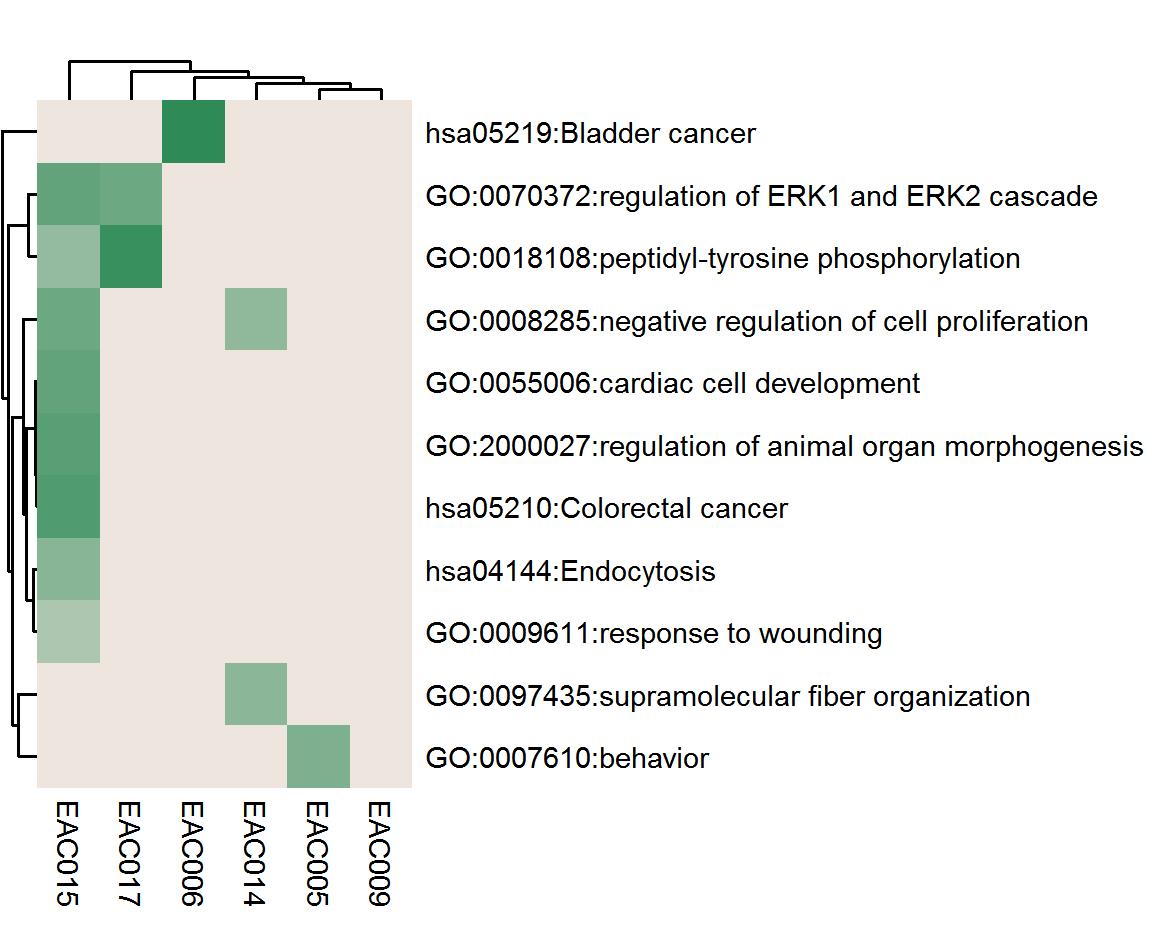
●Heatmap of the top enrichment clusters, generated by the trunk mutation gene list of each patient in the study.●Each row represents one cluster; each column represents one patient.●The discrete color scale represents statistical significance.
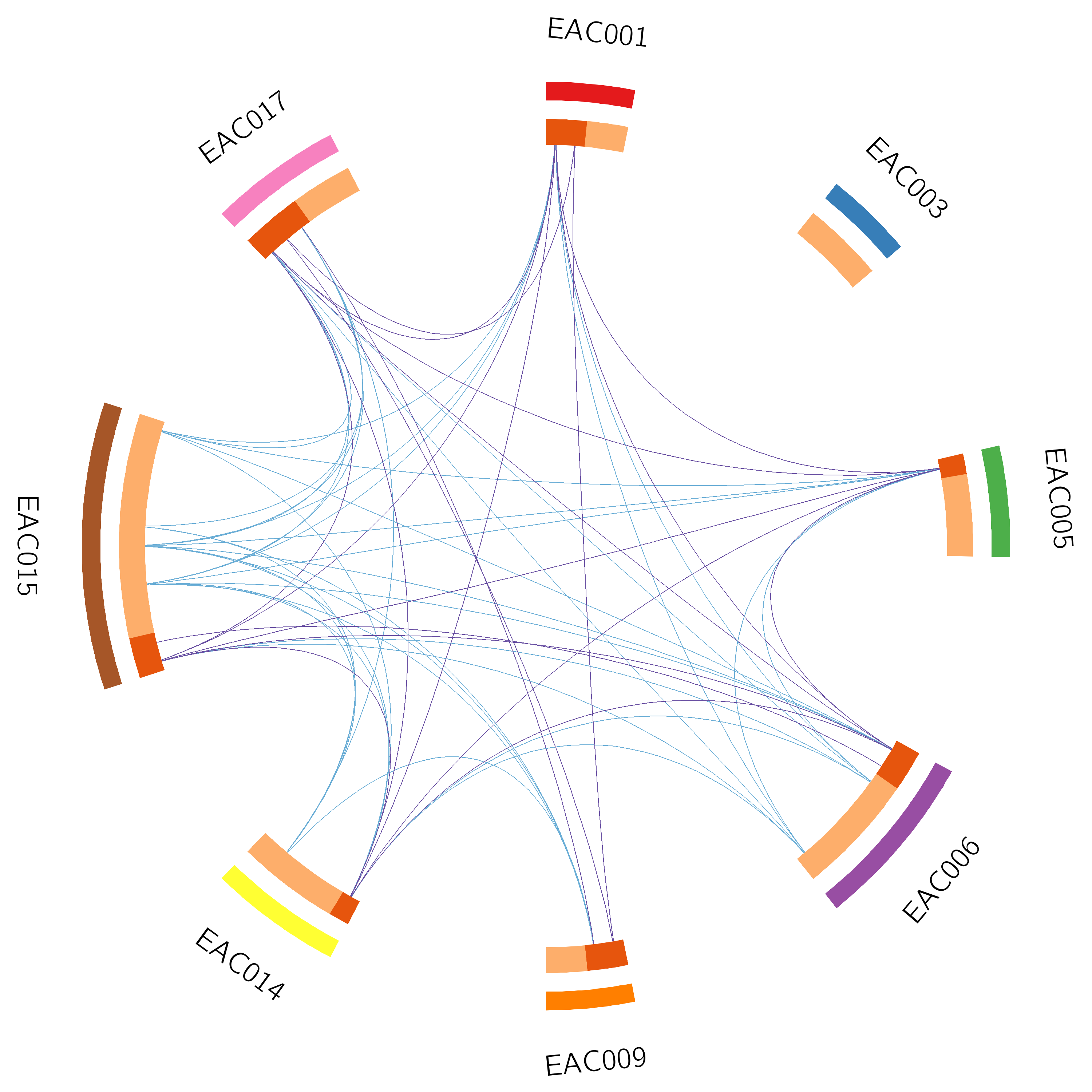
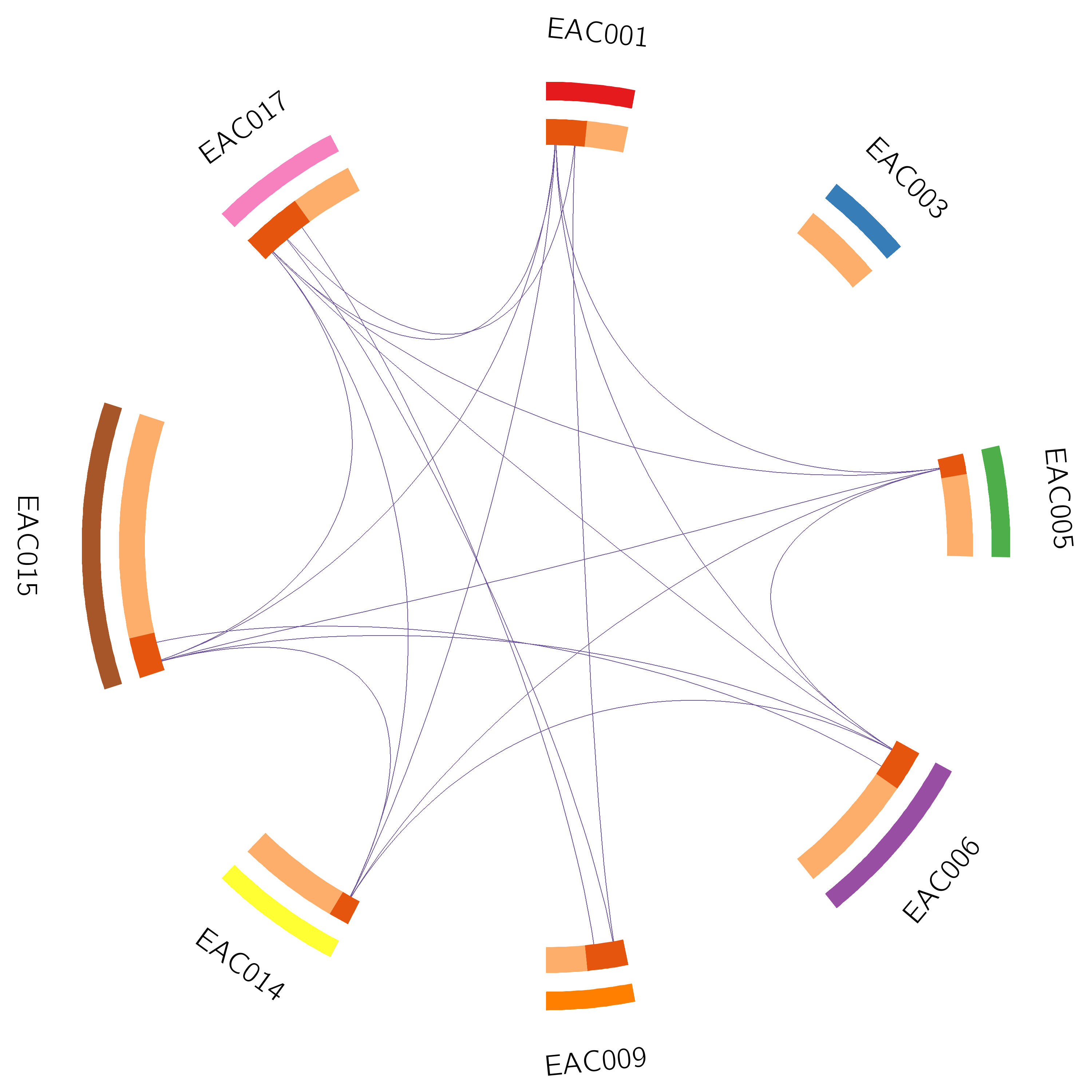
●The Circos plot shows the functional overlaps of genes that share the same ontology term.●The arc annotation is the same as in the left Circos plot.●Blue lines link the different genes where they fall into the same ontology term.
●The Circos plot shows the overlap of the trunk mutation gene list of each patient.●Each outside arc represents the identity of a gene list; each gene is represented as a spot on the inside arc.●For the inside arc, dark orange represents the genes that appear in multiple lists; light orange represents the genes that are unique to that gene list.●Purple lines link the same gene that shared by multiple gene lists.
●Enrichment network visualization for results from the multiple trunk mutation gene lists in one study.●Each term is represented by a circle node, where its size is proportional to the number of input genes fall into that term, and the color represents its cluster identity.●The edge links terms with high similarity; the thickness of the edge represents the degree of similarity. ●Click the picture, more details of the network by cluster can be illustrated.
●The same enrichment network as the above network figure, and has its nodes displayed as pies.●Each pie sector is proportional to the number of hits originated from a gene list.●The color code represents the identities of trunk mutation gene lists.●Click the picture, more details of the network by counts can be illustrated.
